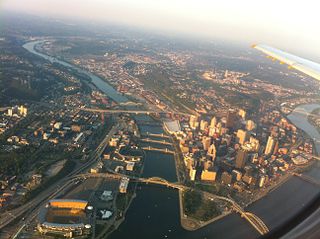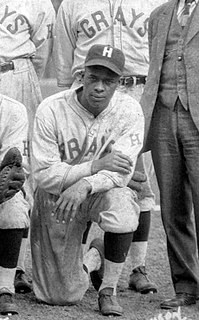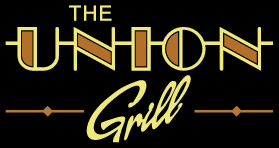The Pittsburgh Crawfords, popularly known as the Craws, were a professional Negro league baseball team based in Pittsburgh, Pennsylvania. The team, previously known as the Crawford Colored Giants, was named after the Crawford Bath House, a recreation center in the Crawford neighborhood of Pittsburgh's Hill District.

The Hill District is a grouping of historically African American neighborhoods in the City of Pittsburgh, Pennsylvania. Beginning in the years leading up to World War I, "the Hill" was the cultural center of black life in the city and a major center of jazz. Despite its cultural and economic vibrancy, in the mid-1950s a substantial area was slated for redevelopment, displacing about 8,000 individuals.
The Chitlin' Circuit was a collection of performance venues throughout the eastern, southern, and upper Midwest areas of the United States that provided commercial and cultural acceptance for African American musicians, comedians, and other entertainers during the era of racial segregation in the United States through the 1960s.
Charles "Teenie" Harris was an American photographer from Pittsburgh, Pennsylvania. Harris was known for his photographs of residents and prominent visitors to Pittsburgh, including musicians and baseball players, which often appeared in the Pittsburgh Courier. His work is preserved in the permanent collection of the Carnegie Museum as a chronicle of mid-20th century life in Pittsburgh's African American communities.

William Augustus "Gus" Greenlee was a highly successful businessman in Pittsburgh, Pennsylvania, who was born and raised in Marion, North Carolina. After migrating to Pittsburgh as a young man and working in the steel industry, he started to acquire his own businesses.
Greenlee Field in Pittsburgh, Pennsylvania, United States, was the first black-built and black-owned major league baseball field in the United States.
Josh Gibson Field is a baseball venue located in the Hill District of Pittsburgh, Pennsylvania. The field was known as Ammon Field or sometimes Ammons Field until 2008, when it was renamed for Baseball Hall of Fame player Josh Gibson.
The Culture of Pittsburgh stems from the city's long history as a center for cultural philanthropy, as well as its rich ethnic traditions. In the 19th and 20th centuries, wealthy businessmen such as Andrew Carnegie, Henry J. Heinz, Henry Clay Frick, and nonprofit organizations such as the Carnegie Foundation donated millions of dollars to create educational and cultural institutions.
WBGI was an American radio station licensed to serve the community of Connellsville, Pennsylvania, approximately 40 miles (64 km) southeast of Pittsburgh. The station was last owned by Keymarket Communications, which also held the final broadcast license. Long known as WCVI, WBGI fell silent after several years of simulcasting sister station WPKL in Uniontown, Pennsylvania, which aired, and continues to air, a classic hits radio format.
Walter Eugene Harper was an American jazz pianist and influential nightclub owner.
Crawford Square is a New Urbanist style housing development located in Pittsburgh, Pennsylvania. It was a project of the city's Urban Redevelopment Authority of Pittsburgh.

Theodore Roosevelt (Ted) Page, nicknamed "Terrible Ted", was an American baseball player. From 1923 to 1937, Page played for numerous Negro league teams, including the Homestead Grays and Pittsburgh Crawfords. He is a member of the Pennsylvania Sports Hall of Fame.
The following is a timeline of the history of the city of Pittsburgh, Pennsylvania, US.

The Union Grill is a restaurant in Washington, Pennsylvania, serving Italian-American cuisine. It is a popular location for the Washington County legal community. The location at the corner of Wheeling and Main Streets has been home to taverns/restaurants dating back to 1791, the beginning of the Whiskey Rebellion. It bears no relation to the similarly named restaurant in nearby Pittsburgh.

Gullifty's was a restaurant in Pittsburgh, Pennsylvania. It was a "cross between a diner and a traditional restaurant," serving fare described as "American eclectic" cuisine Gullifty's was a Pittsburgh landmark known for its desserts.
Central Park was a baseball venue located in the Hill District of Pittsburgh, Pennsylvania from 1921–1925. The stadium was the first black-owned, controlled and managed baseball park in the city.

Sellers McKee Hall was the first African-American music promoter to be based in Pittsburgh, Pennsylvania, as well as professional player and executive in Negro league baseball.

Club Harlem was a nightclub at 32 Kentucky Avenue in Atlantic City, New Jersey. Founded in 1935 by Leroy "Pop" Williams, it was the city's premier club for black jazz performers. Like its Harlem counterpart, the Cotton Club, many of Club Harlem's guests were white, wealthy and eager to experience a night of African-American entertainment.

Mary Dee was the on-air radio personality of Mary Dudley, widely considered the first African-American woman disc jockey in the United States. She grew up in Homestead, Pennsylvania, and then studied at Howard University for two years. After having her family, she attended Si Mann School of Radio in Pittsburgh, and on August 1, 1948, went on the air at WHOD radio. Gaining national attention, Dee broadcast from a storefront, "Studio Dee", in the Hill District of Pittsburgh from 1951 to 1956. She moved her show, Movin' Around with Mary Dee, to Baltimore and broadcast from station WSID from 1956 to 1958. In 1958, she moved to Philadelphia and hosted Songs of Faith on WHAT until her death in 1964.










